What we have to offer to prevent Heart Surgery?

Chelation Therapy: helps removing excessive metals & minerals, responsible for the blockage. It is an non-surgical treatment to cure heart disease.
read more...
Ozone Therapy: We are pioneer in the use of Ozone Therapyin Delhi.
read more...
In this article you are going to read about:
Table of Content
In 2004, Coronary Heart Disease was the leading cause of death in India, leading to1.46 million deaths (14% out of a total of 10.3 million deaths) and in 2015 CHD will cause 4.586 million deaths & 60 million people in India is suffering from CAD
- Four people mainly between age group of 30 to 50 die of heart attack also known as myocardial infarction (MI) every minute in India
- Twenty-five per cent of heart attack deaths occur in people less than 40
- Every day nine hundred people under 30 die due to heart disease in India
This video will show you how gradually plaque builds up in a coronary artery creating a partial blockage and if not taken care of can block the coronary artery completely, making the condition life threatening.


What is Coronary Heart Disease?
Coronary Heart Disease (CHD) also known as Coronary Artery Disease (CAD) or Cardiovascular Disease is a disease in which a substance called plaque, builds up inside the coronary arteries. The build of plaque narrows the arteries, making harder for the blood to flow through. Building up of plaque further leads to formation of blood clots which actually cause a heart attack or stroke. The process of building up of plaque in coronary artery is called Atherosclerosis and is very slow process and takes years to build up leading to CHD/CAD. Coronary artery is one of the blood vessels which carry oxygenated blood to the heart and when the supply of oxygenated blood is stopped partially or completely due to blockage in Coronary artery, the part of heart muscle supplied by that artery begins to die leading to Coronary Artery Disease (CAD), commonly known as Heart Attack/ Myocardial Infarction.
Mostly, people survive their first heart attack and the recovery totally depends upon the intensity or severity of attack, the damage happens during the attack and how quickly the aid was provided to the person suffering from the heart attack. In case the attack was not severe and the aid was provided on time, the recovery is quick and the person can lead a normal life but one has to make some changes to his/her lifestyle and eating habits with some medication advised by the doctor.
Symptoms of Heart Attack
- Angina
- Chocking Feeling
- Sweating
- Nausea
- Irregular Heart Beat
- Heart Burn
- Silent Attack
Result of Heart Disease
- Breathlessness
- Fatigue
- Angina
- Heart Attack
- Sudden Cardiac Arrest leading to Death
Angina Pain
Angina is not a disease; instead it is symptom of an underlying heart problem and is usually is a symptom of Coronary Artery Disease (CAD). In case any heart muscle is not getting enough supply of oxygen rich blood causes pain or discomfort near chest in the form of pressure in your chest or you can feel pain in your shoulders, arm, neck, jaw or back too is known as angina. One can also mistakenly take as indigestion or gastric pain.
Types of Angina
Stable angina: is the most common type of angina. Stable angina is predictable as it has a fixed pattern which can be tracked by monitoring the activity you are indulged into and when you feel chest pain. That means you can control the stable angina by keeping a control on the activities due to which the pain occurs.
The pain usually goes away a few minutes after you rest or take your angina medicine. Stable angina isn't a heart attack, but it suggests that a heart attack is more likely to happen in the future.
Unstable Angina: could be more severe and without following set patterns can occur more frequently. Unstable angina can occur whether you may or may not be doing any physical activity and rest or medication may not give you relief.
Unstable angina is very dangerous and requires emergency treatment. This type of angina is a sign that a heart attack may happen soon, may be any time or immediately after angina pain.
Variant (Prinzmetal's) Angina: is rare. Sudden narrowing of one of the coronary arteries commonly known as spasm causes this type of angina. Variant angina usually occurs while you're at rest & usually happens between midnight and early morning with severe pain and can lasts from 5 to 30 minutes. Person suffering from Variant angina may lose consciousness. Medicine can relieve this type of angina. It occurs commonly in people who smoke, have high cholesterol or are suffering from high blood pressure.
Microvascular Angina: can be more severe and last longer than other types of angina. Medicine may not relieve this type of angina.
Major causes of CAD/CHD
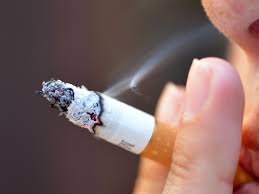
Smoking
Smoking is the single largest risk factor causing CAD/MI. Smoking turns into addiction and thus is responsible for early MI. Smokers are at two-fold risk as compared to non-smokers and four times at increased risk of sudden death due to heart attack.
Smoking; in fact tobacco consumption makes the blood vessels stiff and less elastic making them vulnerable to ruptures and not able to bear stress as compare to normal or healthy blood vessels. This stiffness in blood vessels leads to blood clotting resulting in MI.
High Cholesterol level
High Cholesterol level There are two type of Cholesterol, High Density Lipoprotein (HDL) or good cholesterol & Low Density Lipoprotein (LDL) or bad cholesterol. Good cholesterol helps the blood vessels to remain flexible and also helps body to get rid of LDL or bad cholesterol where as excess of bad cholesterol or LDL deposits enter the inner lining of the coronary arteries and with a gradual pace tiny crystals turns into large deposits making the arteries narrower resulting in obstruction in blood flow leading to heart attack.
People having low or normal cholesterol levels may also develop CAD due to having low levels of good cholesterol or HDL and slightly high level of unique LDL having tendency of forming blood clot.
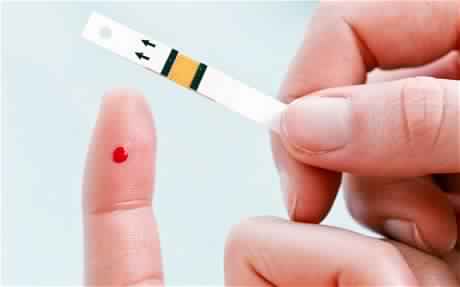
Diabetes
Diabetes if kept unattended or not properly taken care of can lead to MI. Diabetes is now very common among the youngsters below age of 35 making diabetes one of the major causes for developing MI among youngsters.

Hypertension
Hypertension Sedentary lifestyle, eating habits and stress level contribute a lot in developing hypertension among youngsters. Consumption of food rich in salt, cholesterol and trans-fat increases the risk of high blood pressure and people with high BP more likely to develop CAD. High BP increases the pressure on artery walls and over time this extra pressure can damage the arteries. These damaged arteries are most likely to become narrowed and hardened by fatty deposits.
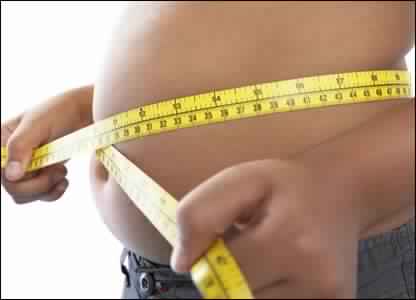
Obesity
Obesity is a major factor responsible for MI or CAD. Inactivity and consuming food, rich in fat increases obesity among Indians leading to many health problems like high BP, diabetes, high cholesterol etc. All these mentioned disease leads to CAD/MI.

Unhealthy Food Habits
Unhealthy Food Habits includes food rich in salt and trans-fat. All junk food are bad for health and rich in LDL the bad cholesterol.
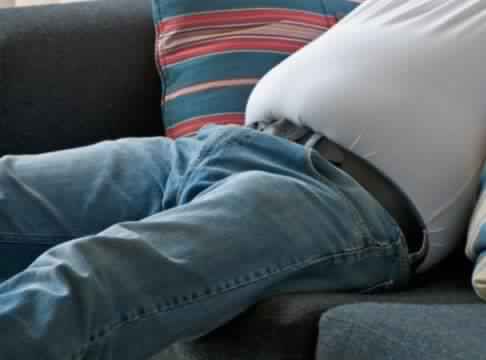
Physical Inactivity/ Sedentary Lifestyle
Physical Inactivity/ Sedentary Lifestyle increase the risk of CAD as inactivity leads to obesity and deposit of fat. Physical activity or exercise keeps the heart muscles in good shape & reduces LDL level.

Stress
Stress is common among people working as IT professionals or working in odd hours like in BPO. Poor sleeping habits increases stress level too. Many studies reveal that the prolonged stress in personal or professional lives leads to MI.

Genetics
Genetics plays a major role in India and Indians are prone to heart disease. As compared to western people Indians have relatively smaller coronary arteries, making us more vulnerable to CAD/CHD.

Lack of Awareness
Lack of Awareness makes this disease more dangerous than it is. Lack of knowledge and information on CAD/CHD is responsible for sudden deaths in rural India due to MI.
Healthcare is expensive in India and major steps must be taken to make the general public mainly people living in villages and small cities aware of the disease and how to prevent it.

Atherosclerosis
Atherosclerosis is a hardening of arteries due to deposition of plaque in blood vessels. Stiff arteries are less capable of bearing pressure and are ruptured easily, causing blood clotting.
How to Prevent CAD/ CHD/ MI
Most risk factors for cardiovascular disease (CVD) are linked, which means if you have one disease or problem then you are prone to other disease as well, for eg. if you have High BP then you are prone to diabetes too. So, the best thing to prevent yourself from CAD/CHD is to take care of your health as a whole which includes good eating habits, fewer intakes of tobacco and alcohol, indulging in physical activities and lot more discussed below:

Don't smoke or use Tobacco
The good news for smokers is that, when you quit smoking, your risk of heart disease drops almost to that of a nonsmoker in about five years. And no matter how long or how much you smoked, you'll start getting rewards as soon as you quit.
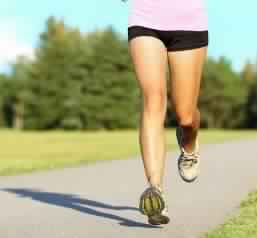
Exercise for 30 minutes almost 4 days a week
Studies shows that 30 minutes of brisk walking or jogging makes a lot of difference in keeping the heart muscles healthy. In case you can't walk or jog then indulge in some physical activity where you are pumping blood to your heart keeping it in good shape.
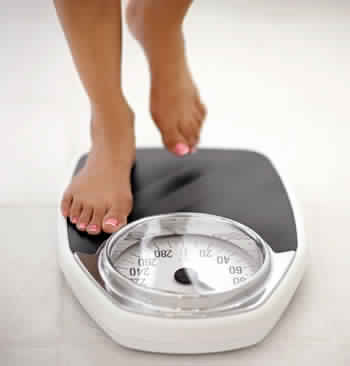
Weight Management
Being overweight, especially if you carry excess weight around your middle ups your risk of heart disease. Excess weight can lead to conditions that increase your chances of heart disease — high blood pressure, high cholesterol and diabetes. Keeping your body in shape is a good thing to consider as weight management is not possible without healthy eating and physical exercise.

Quality sleep
Quality sleep keeps the mind fresh and gives it ample time to recover. Good and regular sleep reduces stress levels keeping the CHD/CAD at bay.

Regular health screenings
Regular health checkups especially after the age of 35 keep you informed about the health and in case of detection of any disease, timely action can be taken to prevent the disease before the condition become worse. Disease diagnosed early is reversible to an extent. Some necessary screening are as follows:
Blood Pressure
Adults should have their blood pressure checked at least every two years. You may need more-frequent checks if your numbers aren't ideal or if you have other risk factors for heart disease.
Cholesterol Levels
Adults should have their cholesterol measured at least once every five years starting at age 20 if they have risk factors for heart disease, such as obesity or high blood pressure. If you're healthy, you can start having your cholesterol screened at age 35 for men and 45 for women. Some children may need their blood cholesterol tested if they have a strong family history of heart disease.
Diabetes screening
Diabetes is one of the major cause for developing heart disease and many other health complications, so it is advisable to consult your physician about when you should have a fasting blood sugar test. In case of being overweight or having family history of diabetes, your physician may recommend early screening for diabetes.

Eat a heart-healthy diet
Eating a healthy diet can reduce your risk of heart disease. Diet rich in fiber, fruits, vegetables, whole grain and nuts can give you essential nutrients to maintain your heart in good shape and even helps in reversal of any condition not suitable for heart.

Medication
If you have a particularly high risk of developing CVD, your doctor may prescribe medication to help reduce your risk. Medication used to prevent CVD includes:
- Blood Pressure Tablets– used to treat high blood pressure
- Statins– used to lower blood cholesterol levels
- Low-Dose Aspirin– used to prevent blood clots
Investigation/ Diagnosis to Treat CAD/ CHD

Electrocardiogram (ECG)
Electrocardiogram (ECG) An electrocardiogram (ECG) is a medical test that detects cardiac (heart) abnormalities by measuring the electrical activity generated by the heart as it contracts. ECG can help diagnose a range of conditions including heart arrhythmias, heart enlargement, heart inflammation and coronary heart disease.
Some of the various heart problems that can be diagnosed by ECG include:
- Enlargement of the heart
- Congenital heart defects involving the conducting (electrical) system
- Abnormal rhythm (arrhythmia) – rapid, slow or irregular heart beats
- Damage to the heart such as when one of the heart's arteries is blocked (coronary occlusion)
- Poor blood supply to the heart
- Abnormal position of the heart
- Heart inflammation
- Cardiac arrest during emergency room or intensive care monitoring
- Disturbances of the heart's conducting system
- Imbalances in the blood chemicals (electrolytes) that control heart activity.

Treadmill Stress Test (TMT)
Treadmill Stress Test (TMT) Patients suffering from CAD and blocked arteries may not have or have minimal symptoms when at rest but during physical exercise the change in flow of blood may show some symptoms. To observe these changes or symptoms the patient is said to run on electronic treadmill or in some cases stationary bicycle is being used in some laboratories.
During exercise, healthy coronary arteries dilate (develop a more open channel) than an artery that has a blockage. This unequal dilation causes more blood to be delivered to heart muscle supplied by the normal artery. In contrast, narrowed arteries end up supplying reduced flow to it's area of distribution. This reduced flow causes the involved muscle to "starve" during exercise. The "starvation" may produce symptoms (like chest discomfort or inappropriate shortness of breath), and the EKG may produce characteristic abnormalities. These changes are monitored and are recorded for further investigation.
TMT is prescribed when:
- Patient shows some sign suggestive of Coronary Artery Disease (CAD)
- Patient with significant risk factor for CAD
- Patients suffering from unexplained breathlessness or fatigue during physical exercise are being diagnosed to evaluate tolerance
- Patient is suffering from hypertension and to evaluate blood pressure response to exercise in patients with high blood pressure
- To monitor irregular heart beats
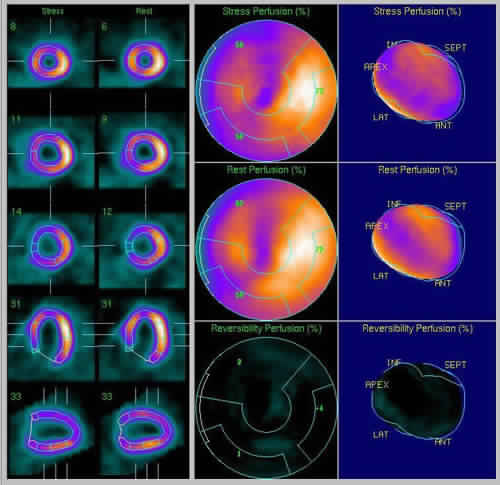
Thallium Scan
Thallium Scan A thallium scan uses a radioactive tracer to see how much blood is reaching different parts of your heart and commonly known as nuclear medicine scans & also called by the name thallium myocardial imaging, cold spot imaging, myocardial perfusion imaging or thallium scintigraphy. This scan are often done to determine the size and location of injured muscle after a heart attack and helps the doctor finding out more about your heart's cells and its blood supply. It is also sometimes done after bypass surgery to see whether grafted blood vessels are functioning properly. It may be recommended for people with persistent unexplained chest pain or to learn more about irregularities found during an electrocardiogram (ECG/EKG).
Thallium stress test is suggested:
- If doctor suspects patient's heart is not getting enough blood flow (oxygen) when it's under stress such as exercise
- If one have chest pain or worsening angina
- If you've had a heart attack
- To check if medication is working perfectly on patients suffering from CAD
- To determine whether or not a procedure or surgery was successful
- Before starting exercise programme the test is done to determine if the heart is healthy enough to bear the stress

Coronary Computed Tomography (CT) Angiography
Coronary Computed Tomography (CT) Angiography A coronary computed tomography angiogram (CTA) uses advanced CT technology, along with intravenous (IV) contrast material (dye), to obtain high-resolution, 3D pictures of the moving heart and great vessels.

Positron Emission Tomography (PET) Scan
Positron Emission Tomography (PET) Scan A positron emission tomography (PET) scan of the heart is an imaging test that uses specialized dye to allow doctors to view problems with the heart.
The dye contains radioactive tracers, which concentrate on areas of the heart that may be injured or diseased. Using a PET scanner, your doctor can spot these areas of concern.
A heart PET scan is typically an outpatient, same day procedure.
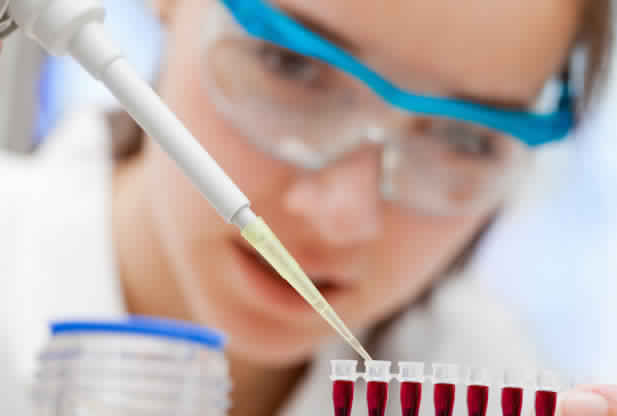
Lipid Profile
Lipid Profile A lipid profile is a blood test that measures the amount of lipids, or fats, in your blood. The lipids measured are usually total cholesterol, HDL cholesterol, LDL cholesterol and triglycerides. When levels of these lipids are abnormal, there is an increased risk of heart attack and stroke.
Treatments Available for CAD/ CHD
Bypass Surgery: is also known as Coronary artery bypass grafting. A surgeon takes a healthy blood vessel from leg, arm or chest and connects or grafts it to the affected artery slightly past the site of the blockage. The objective of this surgery is to create the new path for the oxygenated blood to pass through to the heart avoiding the blocked section of the affected artery.
Patients undergoing bypass are put under general anesthetic and are not awake during surgery
Angioplasty: is the technique of mechanically widening narrowed or obstructed arteries. Coronary angioplasty is accomplished using a balloon-tipped catheter inserted through an artery in the groin or arm to enlarge a narrowing in a coronary artery. Angioplastyis is successful in opening coronary arteries in well over 90% of patients.
Non-invasive or Non-surgical Treatments for CAD
The non-surgical or non-surgical treatments for CAD include changes in lifestyle and use of medications. Noninvasive procedures are effective in case of early diagnosis of CAD/CHD. With regular health check-ups one can be aware of the condition of heart and can act accordingly. Change in diet and routine exercise is part of noninvasive treatment.
Some precautionary treatments which can effectively help heart patients to avoid bypass surgery or angioplasty available are:
Foods to Keep Away a Heart Attack
To avoid CAD/CHD. high blood pressure or high cholesterol one must make some changes in his/her food intake. What we eat and how we eat makes a lot of difference.
Increase the intake of vegetables, fruits & whole grains with dietary fiber. Dietary fiber helps lower bad cholesterol (LDL) which is mainly responsible for CAD/CHD. Eat more legumes, seeds & nuts which supply good cholesterol (HDL)
For non vegetarians one can have fish & chicken.

